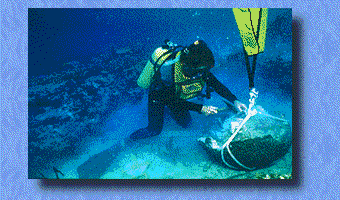Mitigation and Restoration
Mitigation and restoration involve the same types of activities but are initiated for slightly different reasons. Both involve actions which either restore a habitat, create a new habitat, or enhance an existing habitat. However, mitigation is initiated to compensate for damage inflicted by new development, while restoration is to offset historical losses and re-establish past values. Habitat restoration and creation complement protection and conservation in efforts to retain habitat function and value. While protection and conservation are more cost effective, restoration is evolving as a valid technique to reverse habitat loss.
Restoration examples could be:
- the removal of dams and dikes to restore natural flow.
- A wide variety of man's activities, including logging, road construction, and streambank protection, have destroyed and damaged riparian habitat in the past. Encouraging and allowing regrowth of riparian habitat along the edges of water bodies provides a concentration point for a great variety of wildlife.
- Over one million eelgrass plants have been carefully harvested from donor sites and replanted in the bays and coastal lagoons of southern California.
- Kelp beds are also cultured and transplanted to wild sites to replenish depleted zones.
Examples of mitigation (unplanned, but mitigation nonetheless) are:
- And, when a hardbottom site off the east coast of Florida was buried with dredged sand the losses to marine life were huge. Before burial there were 54 species found in the area at mean abundances of 38 individuals and 7.2 species per transect. After burial eight species were recorded with mean abundance of individuals and number of species of under one per transect. Three years later mitigation of shallow artificial reefs of limestone was undertaken. Had this mitigation been initiated before the burial this would have been an ideal refuge for many of the displaced thousands of fish from the burial site.
- M/V Alec Owen Maitland and the M/V ran aground in the Florida Keys National Marine Sanctuary in October 1989. Both groundings and salvage efforts caused extensive coral reef injuries. Through legal settlements, NOAA recovered funds to restore both grounding sites.
Restoring coral reefs such as this one in the Florida Keys is one way to address damage caused by ship groundings and anchorings. Photo courtesy of NOAA.
For many coastal developments there are associated known losses of marine habitats and ecosystems. Developers have to assist with the conservation of these habitats to be able to develop their chosen sites. This system means that some habitats may get damaged in the process of development but others are protected and/or restored.However mitigation and restoration could be used as an excuse to avoid the issue of damaging natural habitat. Development should only proceed over precious wetland and marine habitat if absolutely necessary.


